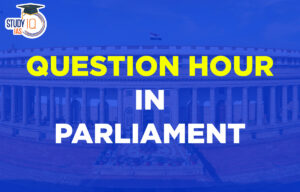Q) “Discussing the changes that have emerged in the institution of marriage in India in the new millennium, explain the reasons behind it. (15 marks, 250 words)
नई सहस्राब्दी में भारत में विवाह संस्था में जो परिवर्तन आए हैं, उनकी चर्चा करते हुए इसके पीछे के कारणों की व्याख्या कीजिए।”
Demand of the Question– The question demands understanding of marriage as an institution and its change with evolving times, and reasons, and impacts on society.
Directive Word- Discuss- This demands mentioning of changes along with explaining the reasons for such changes.
Structure of the Answer–
Intro- Describe marriage as an institution and its importance in Indian society. Use the name of a known sociologist for credibility.
Body- Mention features in the first part. In the second part, mention what are the changes that have occurred in these features in the new millennium (post 2000). While mentioning the changes, give reasons for those changes and also explain them with examples. In the last section state some positives and some negatives of these changes.
Conclusion– Conclude by stating the significance of marriage as an institution in Indian society. Suggest measures to cope up with the evolving changes across various facets like law, family, property, education, society, etc.
Part of Syllabus– GS Paper 1- Salient features of Indian Society
Demand of the Question– This question requires understanding of caste system in India, and its relevance, importance and challenges in society.
Directive Word- The first section “Is” demands mentioning arguments of both the sides. Give reasons- demands giving reasons for the above arguments of both the sides.
Structure of the Answer
Intro- Describe what is caste-system, and use standard definition.
Body- In the first part, mention factors which show the caste-system is losing relevance and provide reasons along with examples. In the second part, mention factors which show the caste-system is acquiring new identities and provide reasons along with examples. In the last part, balance the arguments stating the relevance has decreased in the society as a whole but in personal life, it is acquiring new identities.
Conclusion– State the changes that have occurred in current context and suggest measures for betterment of society as a whole with respect to caste-system.
Part of Syllabus– GS Paper 1- Salient features of Indian Society
हिंद-प्रशांत क्षेत्र की क्षमता का एहसास करने के लिए भारत द्वारा उठाए गए कदमों पर चर्चा कीजिये।
Demand of the Question– The question demands understanding of the Indo-Pacific region, its location, its stakeholders, the role of India and other players in that region.
Directive Word- Discuss- It demands mentioning of importance & potential of the Indo-Pacific region, along with steps taken by India to realize potential, discuss it’s pros, cons and suggestions for future.
Structure of the Answer
Intro- Describe the Indo-Pacific region, draw a map to show its location and mention major stakeholders in the region.
Body- In the first part, mention the potential of the Indo-Pacific region (in terms of economy, trade, military, etc.). Along with it, mention its importance for India. In the second part, mention India’s policy for the Indo-Pacific, its engagement in the region, along with the organizations that function in that region. Mention the role of China. In the last section, write the challenges while engaging the region and in what aspects the current policy falls short.
Conclusion– Conclude by stating the importance of the Indo-Pacific region for India and suggest measures to better engage by countering challenges.
Part of Syllabus– GS Paper 2- Bilateral, regional and global groupings and agreements involving India and/or affecting India’s interests.

 Question Hour in Parliament: Meaning, Ty...
Question Hour in Parliament: Meaning, Ty...
 Daily Quiz 18 July 2025
Daily Quiz 18 July 2025





















